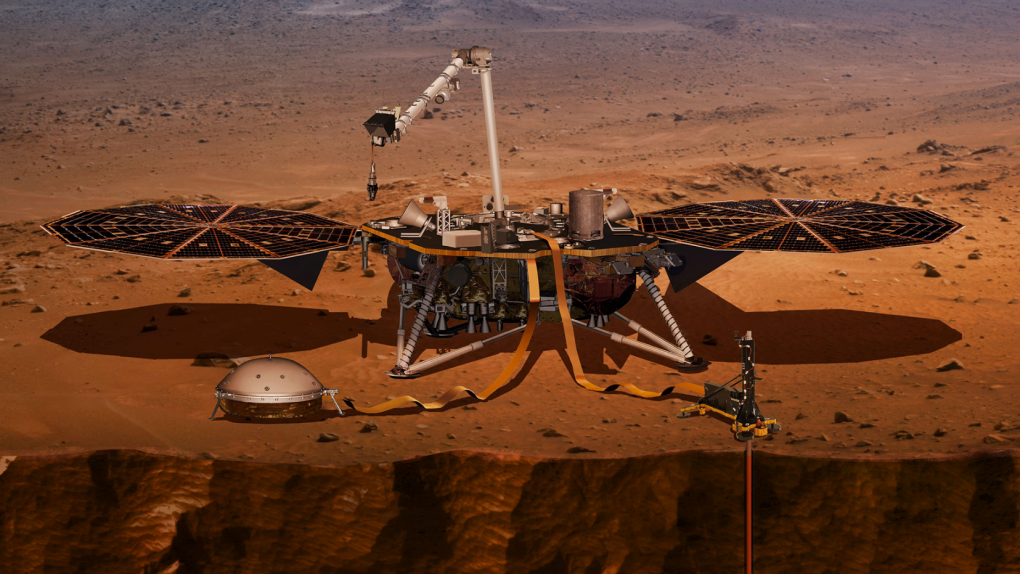Watching NASA launch new gadget into space is always a fun way to spend an hour, but if you hope to catch a live glimpse of the agency’s new Mars lander, InSight, heading to the Red Planet you’re going to have to get up right at the buttcrack of dawn or maybe even earlier. The InSight launch teams just finished up their Launch Readiness Review, and it’s looking like everything is lining up perfectly for the scheduled liftoff on Saturday, May 5th, at 7:05am ET. The InSight mission will be carried into space by an Atlas V rocket courtesy of United Launch Alliance, and as NASA explains, the launch “will be the first interplanetary launch from the West Coast” when it takes off from Vandenberg Air Force Base in California. If for some reason the launch has to be delayed — a fog layer is expected to obscure visibility, but it’s not expected to be a deal breaker at this point — the launch period extends all the way to June 8th, allowing plenty of time for follow-up attempts.
NASA’s InSight lander is a high-tech piece of hardware that focuses more on listening than seeing. The device will land on Mars in late November, and its mission is to gather data about the interior makeup of the planet and listen closely for the “marsquakes” that regularly roll across the surface.
InSight — which stands for Interior Exploration using Seismic Investigations, Geodesy, and Heat Transportation — will scan deep into the planet and deliver a more detailed picture of its interior geography than has ever been possible before.
Its initial mission period lasts for just over one Martian year, which is approximately two Earth years. It’s not a rover, and isn’t mobile in any sense, but its powerful instruments will use sound waves and vibrations to do the exploring.
The launch on Saturday morning won’t just be carrying the InSight lander, and NASA is using the opportunity to send two other tools along for the trip to Mars. Two tiny “CubeSat” satellites will also be following a path to the Red Planet. The suitcase-sized spacecrafts will be an important test of miniaturized observation hardware and, if everything goes well, they will be used to send back information on the status of InSight as it makes its final descent onto the planet.
Along with all of its pricey tools, the lander will be equipped with a pair of silicon chips. Those chips carry the names of hundreds of thousands of people who signed up on NASA’s website late last year as “participants” in the mission.








